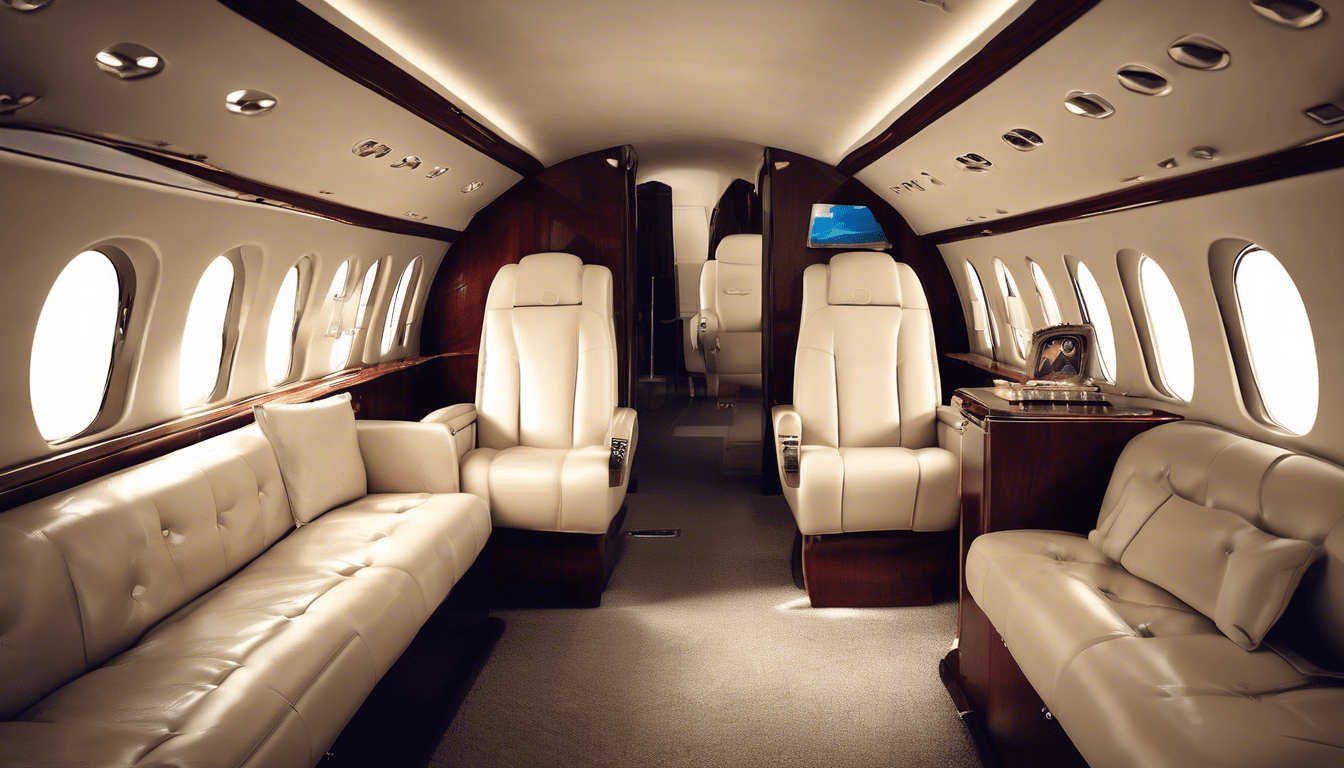Taylor Swift’s private jet usage reveals more than luxury; it highlights evolving travel habits among the world’s elite. While her flights exemplify a desire for convenience and exclusivity, they also bring environmental sustainability into focus. Industry responses, technological advances, and shifting consumer expectations reflect a complex tension between comfort and responsibility. Exploring these trends offers a nuanced understanding of how celebrity influence shapes modern luxury travel and its broader societal impact.
Overview of Taylor Swift’s Private Jet Usage
Discovering the patterns behind a high-profile star’s travel
This might interest you : Revolutionizing urban living: leveraging ai for enhanced renewable energy solutions in smart cities
Taylor Swift’s private jet usage exemplifies the lifestyle of a top-tier celebrity engaging in luxury travel. Known for her meticulous scheduling and high demand for privacy, Swift frequently relies on her private jet to move between concert venues, promotional events, and personal destinations. This preference for exclusive and secure travel enables her to maintain efficiency, comfort, and confidentiality, essentials for managing a busy career.
Analyzing the frequency and destinations of Taylor Swift’s private jet flights reveals a pattern typical of many A-list stars. She often travels multiple times weekly, with frequent routes including major cities like Los Angeles, New York, Nashville, and international stopovers during world tours. This high volume and variety of destinations underscore how private jet travel accommodates the dynamic and unpredictable nature of a celebrity’s calendar, allowing for quick turnarounds and spontaneous schedule changes.
Compared to other celebrity travel behaviors, Swift’s approach aligns with industry norms among artists of similar stature. While some celebrities may prefer commercial flights when feasible, many, like Taylor Swift, depend heavily on private jets to avoid public scrutiny and optimize time. Their travel decisions balance luxury, privacy, and practical necessity, making private jets an integral part of their professional toolkit.
For those interested in deeper insights into the specifics of her travel lifestyle, exploring taylor swift’s private jet can shed light on the luxury and environmental implications connected to such high-frequency private aviation.
The Luxury Travel Trends Among High-Profile Celebrities
The prominence of private jets in luxury travel has notably surged among high-profile celebrities, becoming a symbol of both status and convenience. This trend is driven by the need for flexible schedules, privacy, and the ability to travel seamlessly without the constraints of commercial airlines. When asked why these stars favor private jets, the answer lies in a combination of privacy, time efficiency, and comfort. Celebrities can avoid long airport lines, enjoy personalized services, and maintain a low profile during their travels.
Celebrity influence plays a significant role in shaping luxury travel preferences. Their choices often set new industry standards, prompting jet manufacturers and service providers to innovate continuously. This results in features such as custom-designed interiors, advanced entertainment systems, and tailored catering menus that cater specifically to individual tastes. The presence of such exclusive amenities demonstrates a high level of customization and comfort rarely found in standard commercial flights.
In addition, many celebrities invest in unique services on their private jets, including onboard spas, conference rooms, and even sleeping quarters that rival luxury hotel suites. These amenities not only enhance the travel experience but also reflect a broader trend where the journey itself becomes part of the overall luxury lifestyle. This shift has influenced the broader luxury travel market, pushing providers to uphold higher service levels to meet the expectations set by celebrity travelers. For readers interested in a deeper dive into this topic, the exploration of taylor swift’s private jet showcases a prime example of these luxury features and their impact on travel standards.
Environmental and Social Impacts of Private Jet Travel
Exploring the footprint of luxury in the skies
Carbon Footprint of Private Jets
Private jets contribute disproportionately to carbon emissions compared to commercial flights. Despite carrying fewer passengers, these aircraft consume large amounts of fuel per hour, producing significant greenhouse gases. For example, a private jet can emit up to ten times more CO₂ per passenger than a commercial airliner flying the same distance. This elevated carbon footprint results from the smaller scale of operations combined with the high fuel burn rates necessary for private jets’ speed and convenience.
When comparing these emissions concretely, commercial airlines often benefit from economies of scale; they carry many passengers simultaneously, spreading the environmental impact across more people. In contrast, private jet travelers take on a far higher per capita environmental cost. This imbalance highlights why private jet travel is frequently criticized for its outsized contribution to climate change and environmental degradation.
Industry Response and Carbon Offset Initiatives
In response to these concerns, the luxury travel industry—including operators of private jets—is increasingly adopting carbon offset programs. These initiatives allow private jet users to invest in environmental projects that reduce or capture emissions elsewhere, such as reforestation or renewable energy projects, effectively neutralizing their own flight emissions.
However, adoption remains uneven. While some high-profile owners and operators actively engage with offsetting, others are less consistent, raising questions about the overall effectiveness of these programs in mitigating environmental impact. The industry is also exploring cleaner technologies, like sustainable aviation fuels and more efficient aircraft designs, but these are still emerging solutions.
Understanding the full environmental cost of private jet travel is essential for making informed decisions about luxury transport. For those intrigued by related aspects of luxury and environmental impact, looking into taylor swift’s private jet offers a compelling real-world example of balancing convenience with sustainability concerns.
Broader Implications of Luxury Travel Trends
Exploring social and economic dimensions
Celebrity travel habits, such as Taylor Swift’s use of private jets, significantly influence consumer luxury spending. When high-profile figures frequently travel by private jet, they set aspirational standards that often drive demand for luxury transportation among affluent consumers. This phenomenon not only reinforces the association between private jets and elevated social status but also shapes broader consumer behavior in the luxury market.
Private jets serve as powerful symbols of exclusivity. Their ownership and usage underline social distinction, making them coveted markers of prestige. This status reinforcement can encourage more individuals and corporations to invest in private air travel, expanding the luxury travel sector.
However, the rising popularity of private jets raises important policy and environmental discussions. Private jet emissions contribute disproportionately to carbon footprints compared to commercial flights. Policymakers worldwide are increasingly evaluating regulations targeting these emissions to address climate concerns without stifling the luxury travel industry. Debates focus on balancing economic interests with environmental responsibility, signaling a critical juncture for future travel trends.
How Celebrity Luxury Travel Influences Industry and Consumer Behavior
Celebrity luxury travel, particularly via private jets, has become a powerful force shaping the travel industry and consumer behavior. The shift in luxury travel services is noticeable as providers tailor offerings specifically to the high-profile demands of celebrities. Features such as privacy, exclusivity, and bespoke amenities have become standard expectations, redefining what is considered luxury travel.
Consumers closely observe these high-profile travel choices, with aspirational behaviors emerging as a result. The visibility of celebrities traveling in lavish planes heightens demand not only for private jet charters but also for premium ground services, personalized experiences, and cutting-edge technology onboard. This creates a ripple effect within the market, as everyday luxury travelers seek to emulate their favorite stars.
Looking ahead, the future outlook of private jet use shows consistent growth among affluent travelers. Innovations focusing on sustainability and enhanced passenger comfort are expected to drive the next wave of private aviation trends. For instance, taylor swift’s private jet epitomizes both high levels of luxury and the evolving expectations around environmental responsibility in celebrity travel, influencing broader market standards.
Understanding these dynamics is crucial for stakeholders aiming to stay competitive in an evolving luxury travel landscape.
Insights into Private Jet Ownership and Use
Private jet ownership offers a distinct blend of luxury, convenience, and flexibility that appeals to high-net-worth individuals and businesses alike. Ownership models range from full ownership, where an individual or company holds complete title to the aircraft, to fractional ownership and leasing arrangements. Fractional ownership enables several users to share a jet, distributing costs and maintenance responsibilities, while leasing options provide access without the long-term commitment of buying. This variety allows potential owners to select the model that best fits their travel frequency, budget, and usage needs.
Technological advancements have significantly elevated the private jet industry, merging luxury and safety in unprecedented ways. Modern private jets incorporate cutting-edge avionics, automated systems, and enhanced materials that improve fuel efficiency and reduce emissions. Additionally, in-flight connectivity and customized interiors set new standards for comfort, catering to the desire for a productive yet relaxing environment. These advancements also include state-of-the-art safety features, such as advanced weather radar and real-time monitoring, ensuring every flight maintains the highest safety standards.
The cost considerations of owning a private jet extend beyond the initial purchase price. Operational expenses like fuel, maintenance, hangar fees, and crew salaries contribute to the ongoing investment required. Furthermore, depreciation and market fluctuations influence the jet’s long-term value. Owners must carefully evaluate these factors alongside usage needs to understand the full financial implications. Whether opting for ownership or alternative access methods, understanding these investment dynamics encourages smarter decision-making.
For those intrigued by exclusive examples within this realm, exploring Taylor Swift’s private jet reveals the epitome of combining luxury with cutting-edge technologies. This aircraft embodies how modern private jets are a symbol of status and a practical tool for efficient travel. Access to such jets underscores the broader appeal of private aviation as a lifestyle and business asset.
07. Paragraphs
Exploring the intersection of luxury, environment, and social impact in private jet travel
Taylor Swift’s private jet usage serves as a clear example of how luxury travel practices evolve among celebrities. Her frequent flights highlight a trend where exclusivity and convenience are prioritized, reflecting a lifestyle available to only a select few. Such private jet travel not only signifies status but also embodies the personalization and immediacy desired in high-end travel experiences.
However, this type of travel comes with a significant environmental cost. Private jets generate substantially higher carbon emissions per passenger compared to commercial flights, raising pressing sustainability concerns within the aviation industry and among the public. The carbon footprint associated with Taylor Swift’s private jet and others’ is often scrutinized, fueling a broader discourse on the environmental responsibility of high-profile figures.
In response, the private jet industry is exploring eco-friendly innovations and carbon offset programs. Advancements in alternative fuels, improved engine efficiency, and investment in sustainable aviation practices are intended to reduce the environmental impact of private jet travel. These actions aim to reconcile luxury with sustainability, hoping to influence changing consumer expectations within luxury markets.
The societal implications of private jet use extend beyond environmental issues. It draws attention to wealth inequality debates, as exclusive access to private jets starkly contrasts with the climate struggles faced globally. This dynamic challenges public perceptions, sparking conversations about the responsibilities of the wealthy in contributing to societal and ecological well-being.
Finally, the increasing availability of private jet services points to a shift towards more personalized and exclusive travel experiences for affluent individuals. This trend reshapes how luxury travel is defined, balancing exclusivity with emerging pressures for socially and environmentally conscious choices. For those intrigued by how celebrity travel intersects with luxury and impact, exploring topics like taylor swift’s private jet offers a fascinating glimpse into these evolving dynamics.





